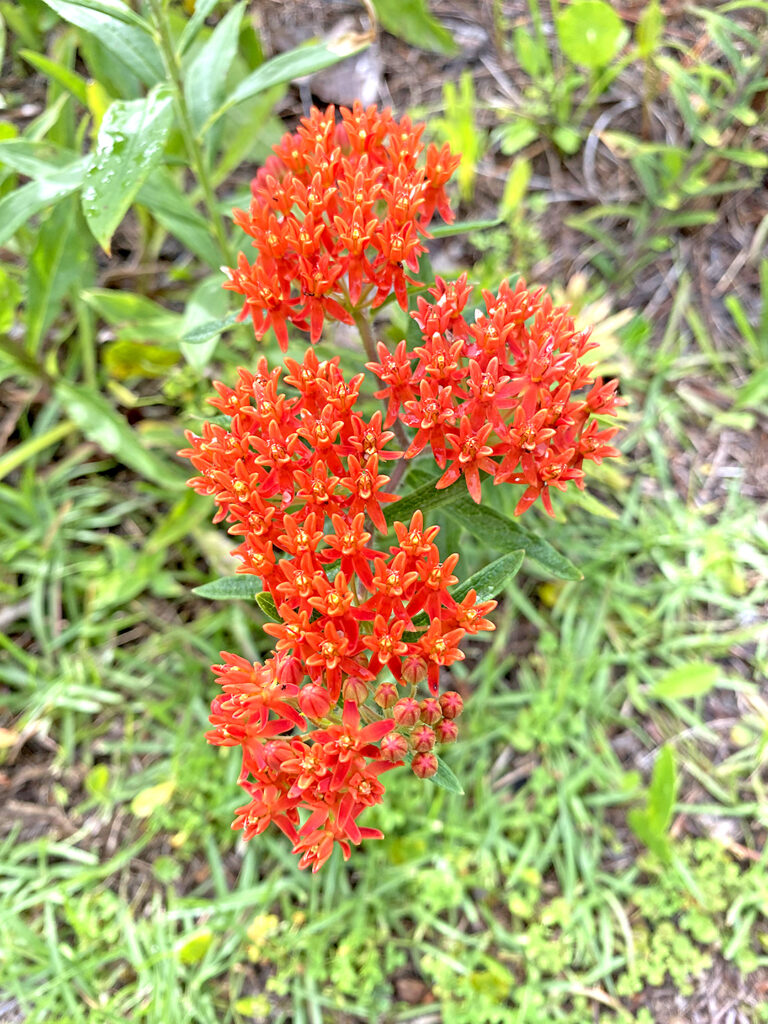Butterflyweed

By LYNN ARTZ, SANDY TEDDER and DAVID RODDENBERRY
Butterflyweed (Asclepias tuberosus) displays bright orange to reddish flowers atop 1-2’ tall, upright to reclining stems. This upland perennial thrives in full sun and dry sandy soil. Its nectar attracts butterflies and bees. However, most visitors cannot access its pollen. Large bees and wasps are the main pollinators. Also called orange milkweed, this native feeds the caterpillars of monarch, queen, and gray hairstreak butterflies and milkweed tussock moths. Its low glycoside content offers little protection from bird predation, however, so egg-laying monarchs prefer other milkweeds. If you find aphids, ants, spiders, and such on milkweeds, let them be. Monarch caterpillar survival is higher on milkweeds with many bugs. To address widespread OE infection in overwintering monarchs, remove and never plant tropical milkweed. Butterflyweed is blooming now in the north gardens at Sopchoppy Depot Park.


